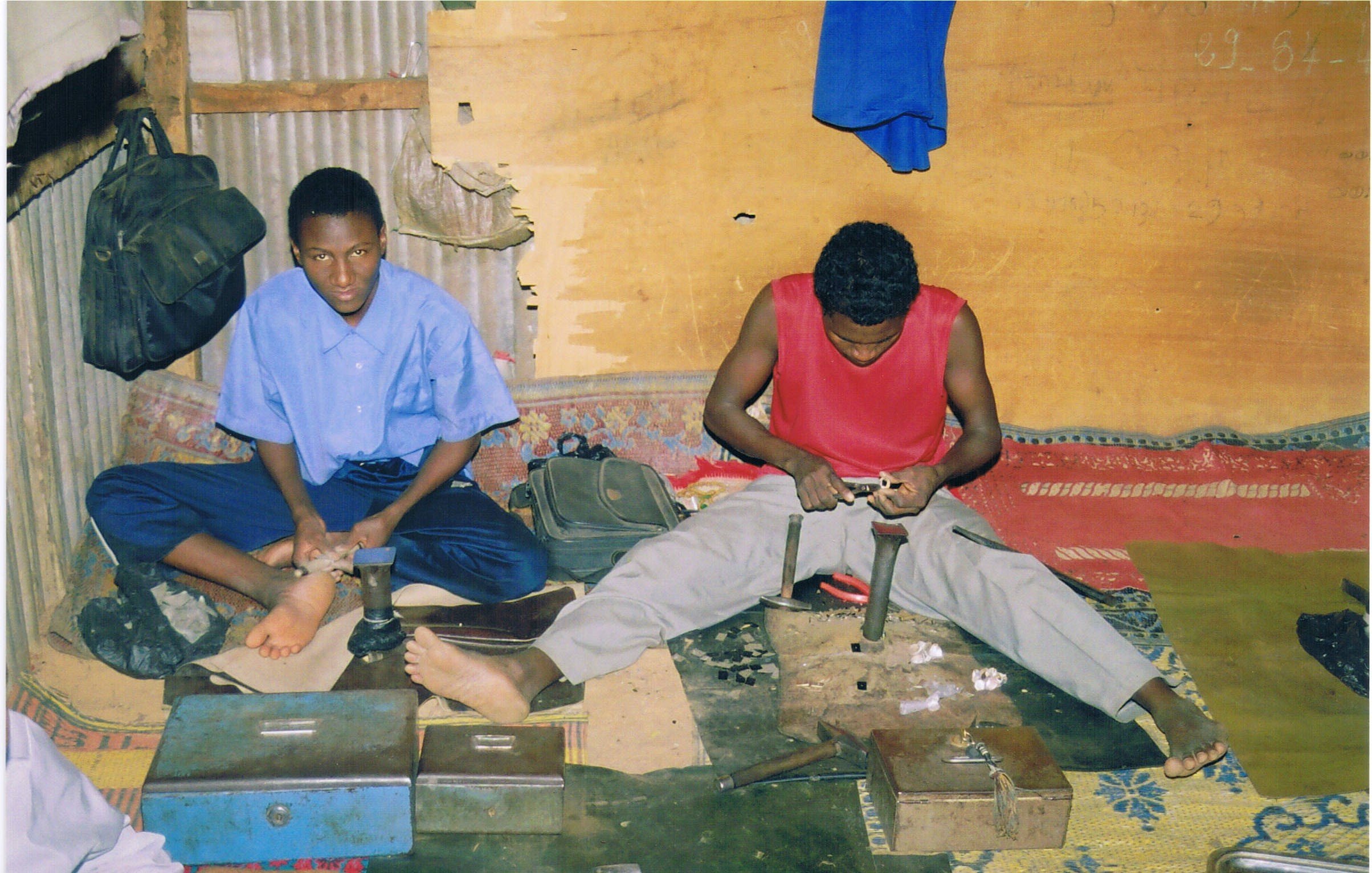Tuaregs in Tabelot: A Community On The Borders of the Sahara
The community is located 150 kms east of the city of Agadez, along the south-eastern borders of the Aïr Mountains and the east extends towards the Teneré, a desert zone where the population is numerically low, and is concentrated around the very scarce oases, where the sand dominates this vast terrifying and inhospitable land.
The climate of Aïr is particularly difficult, the average temperature ranges from 20 to 50º, and the average rainfall is between 17 and 150mm per year.
Economic activities
The natural environment of Aïr offers favourable conditions for the growth of certain activities such farming, agriculture, craftwork and tourism. The care of small ruminants is an area of work which many of the women are dedicated. The craftwork is shared between the men and women, and the men are responsible for the horticulture and the commercial business.
Farming
This constitutes the traditional activity of the nomadic population of Aïr. Farming effectively needs movement between the sources of water and pastoral land based on the seasonal variations of these natural resources. Farming is the principal source of resources for these nomadic people, as it gives them access to milk, cheese, meat, leather and a means of exchange with others.
The livestock is essentially made up of drought resistant species: goat livestock, camels, donkeys, and ovine and bovine animals. The livestock destroyed by the periods of drought is in the stage of recuperation. However this type of activity is always subject to various setbacks suck as the already mentioned drought, illness, wolf attacks etc.
Caravans
Farming and the caravans constitute the economic base of the shepherds. As the goats and sheep are raised to satisfy the meat and milk needs of the family, and the camels are used to transport goods and people.
The caravan commerce still contributes towards the local economy providing an exit for the cattle products (camels, sheep) in the community of Tabelot, the caravans continue along their triangular route from Aïr to Bilma the south of the country and even including Nigeria. When leaving Aïr, the Tuaregs carry dry tomatoes, spices and condiments, wheat, live animals, smoked meat etc. They use these to exchange for dates and salt in Fachi or Bilma. The salt and the dates are then exchanged for cereal in the south of Niger.
Craftwork
Craftwork occupies an important place among the economic activities of the population of Aïr. Numerous products of quality are often made (silver jewellery, leatherwork, baskets and weaving, woodwork etc.) all by expert artisans. Unfortunately these artisans benefit little from their hard work and creativity, due to a lack of regular and secure market outlets.
Agriculture
The agriculture is the main economic activity of Tabelot. The agricultural potential of this zone is extremely important for Niger.
The production system of Aïr is very particular and specific. The orchards are split into territorial parcels of a maximum of 1 to 2 hectares, and the cultivated area does not always occupy all of the available space. They are often found in areas where the water table is not very deep, and as a result more easily exploited. The wells occupy a strategic location in the orchards, as they are those which “give life to the orchard”.
In short the cereals are the principal products of the orchards. They are mainly dedicated to the consumption of the family, they can also serve as a form of currency in exchange for other foods or work. The system of agricultural exploitation has experienced a radical change during the last 20 years, as marketable goods have been introduced (onions, potatoes garlic, tomatoes, peppers, and even coriander). The economy of the region has now changed from a self sufficient system to that of a market system. Nowadays in the Tabelot zone more than in any other part of Aïr, agriculture makes up the principal economic activity.
Education
The rural community now has 15 schools of which 9 are newly created and will soon have the means to function.
The education level of the population is very low. In effect the schooling of the children still has many problems, above all in the areas far from the centre of Tabelot. Few parents insist that their children go to school, the recruitment of the majority of students depends at the moment on the authority of the traditional chiefs.
Health
There are three dispensaries in the territory of the community. These products are stored in a pharmacy administered by the citizens through a management committee. The personnel of health concerning the management and renovation of the stocks do not influence this committee.
Communication
The bad state of the trails that allow communication between the cultural centres and the principal markets of the zone is another handicap for the development of the area. Tabelot communicates with Agadez by a very uneven trail. The main trail as well as the secondary ones are in a lamentable state, it takes around 6 to 7 hours to cross the 150 kms that separate the community of Tabelot and the city of Agadez by 4x4. And the trail is getting worse year by year in the rainy season. The transport difficulties slow down the development of the region, and limit the sales of the products made by the artisans and the horticultural goods.






